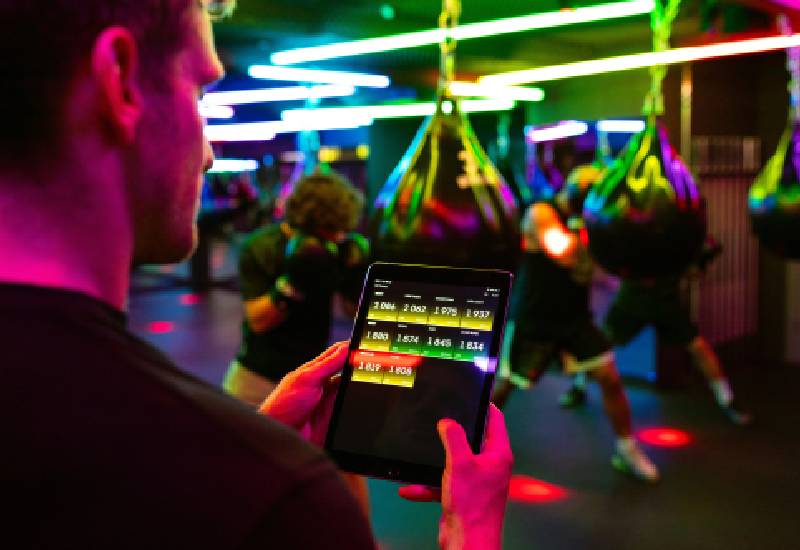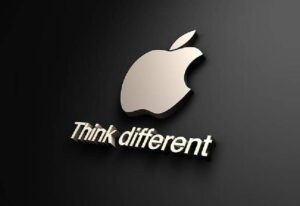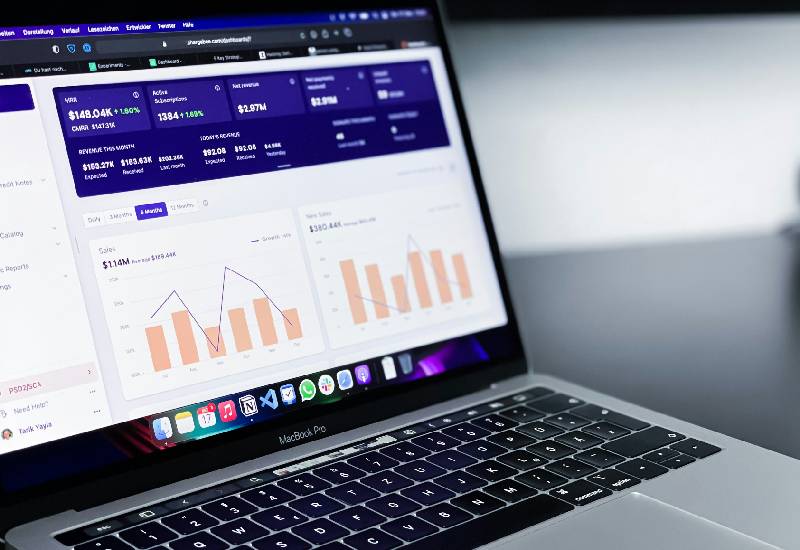Search Engine Optimization (SEO)
Search Engine Optimization (SEO) and the Role of a Digital Marketer
SEO and SEO Tools improves a website’s visibility on search engines by optimizing content, keywords, and site structure to drive organic traffic. Digital marketers use SEO, along with ads, social media, and analytics, to promote brands, attract audiences, and boost sales online.
Small SEO Tools
These are simple, user-friendly tools that assist in basic SEO tasks. For example, they can help you check if your website is using the right keywords or see how your website ranks for certain phrases. They are usually free or offer basic features for free.
AI SEO Tools
AI-powered SEO tools use artificial intelligence to analyze data and improve SEO more efficiently. These tools can predict trends, optimize content, and suggest ways to improve rankings more quickly. They help marketers make smarter decisions by automating tasks and providing insights based on data analysis.
Spell mistake SEO Tools
These tools focus on correcting spelling and grammar errors on a website. Since search engines favor well-written, error-free content, fixing these mistakes can help improve your site’s visibility and rankings. They ensure that the text on your site is clear and professional, which is important for SEO.
Moz SEO Tools
Moz is a popular platform that provides a variety of tools for website analysis and SEO improvement. These tools help users track how their website is performing, identify areas for improvement, analyze competitors, and track keyword rankings. Moz is well-known for its comprehensive SEO reports and insights.
Keyword Planner Tools
These tools help you identify the keywords people are searching for in relation to your business. They give you insight into search volume, competition, and trends, so you can target the best keywords for your SEO strategy. Google Keyword Planner is one of the most widely used tools for this purpose.
In digital marketing, these tools are essential for optimizing websites, improving their ranking, and attracting more traffic from search engines.

Campaign Performance Management:
Campaign Performance Management
This refers to the ongoing process of planning, monitoring, and optimizing online ad campaigns. Digital marketers manage these campaigns by tracking key metrics, analyzing performance, and making adjustments to ensure that the campaign is effective and achieves its goals, such as increasing brand awareness or driving sales.
When running an ad campaign, digital marketers ask important questions like:
- How can videos bring in more customers?
This question focuses on the effectiveness of video ads in attracting customers. Marketers analyze how video content can engage the audience, explain a product or service, and persuade them to make a purchase or take action. - How can we improve campaign results?
This question focuses on improving the campaign’s overall effectiveness. It involves analyzing data and identifying areas where the campaign can be optimized, whether through better targeting, adjusting the ad content, or refining the budget allocation.
Campaign Metrics
Campaign metrics are the key data points that help marketers assess the performance of their ads. These can include:
- Impressions: How many times the ad was shown.
- Click-through Rate (CTR): The percentage of people who clicked on the ad after seeing it.
- Conversion Rate: The percentage of people who completed the desired action (like a purchase or sign-up) after clicking on the ad.
- Cost per Acquisition (CPA): The cost of acquiring a customer through the campaign. These metrics provide insights into the campaign’s effectiveness and help marketers decide what changes are needed.
A/B Testing
A/B testing involves comparing two versions of an ad to determine which one performs better. For example, you might test two different headlines, images, or calls-to-action to see which combination results in more clicks or conversions. This testing helps marketers make data-driven decisions about which ad elements work best and should be used in future campaigns.
Performance Reports
Performance reports are summaries that show how well an ad campaign is doing. These reports provide a detailed analysis of the campaign’s performance using various metrics. They typically include information about what worked well and what didn’t, and they offer recommendations for improvements. By regularly reviewing performance reports, marketers can adjust their strategies to optimize future campaigns.
In short, Campaign Performance Management is all about tracking the effectiveness of online ads, making data-driven adjustments to improve results, and using metrics and testing to ensure the campaign meets its goals.

Data Analytics in Marketing:
Data Analytics in Marketing
Data analytics in marketing refers to the practice of using data to make informed decisions about marketing strategies. Marketers gather, analyze, and interpret data to understand customer behavior, improve campaigns, and achieve better results. By understanding patterns and trends from the data, marketers can optimize their efforts to attract more customers and increase sales.
Data Analytics Software
Data analytics software helps marketers track important metrics like website traffic, user behavior, and sales. These tools analyze data from various sources to provide insights into how visitors interact with a website or digital ad campaigns. For example, Google Analytics is a popular tool that tracks website visitors, showing where they come from, what pages they visit, and how long they stay. This helps marketers see what’s working and what needs improvement.
Financial Analytics Software
This type of software focuses on analyzing financial data related to marketing activities. It helps track money-related goals such as return on investment (ROI), cost per acquisition (CPA), and overall profitability of marketing campaigns. Financial analytics tools are especially useful for measuring the effectiveness of spending and ensuring that marketing efforts are delivering a positive financial return.
Advanced Tools
Advanced data analytics tools are more sophisticated platforms that provide deeper insights into customer behavior and marketing performance. These tools often use machine learning, artificial intelligence, and complex algorithms to analyze large sets of data and offer predictions or recommendations.
They can help with customer segmentation, personalized marketing strategies, and identifying trends that aren’t immediately obvious. Examples include tools like Tableau or IBM Watson Analytics.
Free Tools
For businesses on a budget, there are many free tools available for basic data analytics. These tools often offer limited features but are still helpful for small businesses or startups that are just starting to analyze their marketing data. Some examples include Google Analytics (which offers free versions), Facebook Insights for social media performance, and Mailchimp’s free analytics for email marketing campaigns.
Conversion Tracking in Marketing
Conversion tracking helps marketers measure actions like purchases or sign-ups, showing how well campaigns drive results. Tools like Google Ads and Facebook Ads track performance, enabling smarter decisions and optimized spending through data-driven insights.

Digital Tools for Marketing:
Social Media Management Tools
Social media management tools help marketers manage and organize their social media presence. These tools allow businesses to schedule, monitor, and track posts across different social media platforms like Facebook, Instagram, Twitter, and LinkedIn. They also help marketers manage multiple accounts, engage with followers, and analyze performance (e.g., likes, shares, comments). Some popular tools include:
- Hootsuite
- Buffer
- Sprout Social
These tools save time by allowing marketers to post content in bulk, respond to messages more easily, and track the performance of posts across various platforms.
Content Scheduling Tools
Content scheduling tools are used to plan and schedule posts for future dates, ensuring that content is shared at optimal times. These tools allow marketers to create content in advance and set a schedule for when it should be published. This helps maintain a consistent posting schedule, saves time, and ensures content is delivered even when marketers are busy with other tasks. Popular scheduling tools include:
- Later
- Buffer
- CoSchedule
Content scheduling is particularly useful for businesses that want to automate their social media presence and avoid posting manually every day.
Email Marketing Platforms
Email marketing platforms allow businesses to send targeted messages or newsletters to their customers or potential customers. These platforms help marketers build and manage email lists, create visually appealing email templates, and track the success of their campaigns (open rates, click-through rates, etc.). Email marketing is a great way to keep customers informed about promotions, updates, or new products. Popular email marketing platforms include:
- Mailchimp
- Constant Contact
- Sendinblue
These platforms allow for automated email campaigns, segmentation (sending different messages to different customer groups), and performance tracking to ensure the emails are effective.
In summary, Digital Tools for Marketing are essential for streamlining processes and improving efficiency. Social media management tools help organize posts and engagement, content scheduling tools save time by allowing posts to be planned in advance, and email marketing platforms are key for staying connected with customers and driving engagement through targeted communication.
Audience Engagement Strategies:
Engagement Techniques
Engagement techniques are methods used to interact with an audience in a way that captures their attention and keeps them interested in a brand or business. Digital marketers use these techniques to foster connections with their audience and encourage active participation. Some common engagement techniques include:
- Fun Posts: Entertaining or thought-provoking content that sparks interest, such as memes, quizzes, or lighthearted messages.
- Polls: Simple questions or surveys that allow the audience to share their opinions, preferences, or choices. Polls encourage interaction and provide insights into audience preferences.
- Videos: Short videos or live streams that showcase products, share helpful tips, or entertain. Video content is highly engaging and can be more memorable than other types of content.
These techniques are used to keep the audience engaged, entertained, and more likely to interact with the brand.
Community Building Activities
Community building activities involve creating spaces where people can connect, share, and interact with each other, often around a shared interest or theme related to the brand. These activities help foster a sense of belonging and loyalty among customers or followers. Examples of community-building activities include:
- Creating Groups or Forums: Online spaces, such as Facebook Groups or private forums, where members can discuss topics, ask questions, share experiences, and connect with others who share similar interests.
- Hosting Events: Virtual or in-person events like webinars, Q&A sessions, or meetups where the brand and its audience can interact in real-time.
Building a community encourages long-term relationships with customers, making them feel more connected to the brand and more likely to engage with it.
User-Generated Content
User-generated content (UGC) is content that is created and shared by customers or fans of the brand. It can include photos, videos, reviews, or testimonials that highlight the customer’s experience with the brand or its products. Sharing UGC has several benefits:
- Builds Trust: When potential customers see real people enjoying a product, they are more likely to trust the brand.
- Social Proof: Positive reviews or photos from satisfied customers act as social proof, showing that others value the brand.
- Increases Engagement: Encouraging users to share their content (such as using a branded hashtag or tagging the brand) promotes engagement and makes the audience feel involved in the brand’s story.
Brands can share UGC on their own social media channels, websites, or advertisements to increase engagement and create a sense of community.
In summary, Audience Engagement Strategies focus on creating meaningful interactions with the audience. Using fun and interactive content (like polls and videos), building communities for deeper connections, and sharing user-generated content all help strengthen the relationship between the brand and its audience, fostering loyalty and encouraging more engagement.
Increasing Website Traffic:
Referral Traffic
Referral traffic refers to visitors who come to a website through links on other websites, rather than directly typing in the website’s URL or finding it via search engines. These visitors are referred to the website from another source, such as:
- Links on blogs, news articles, or partner sites.
- Social media posts or influencer collaborations.
- Direct links in email newsletters.
Marketers ask questions like:
- What is referral traffic?
As mentioned, it’s traffic that comes from external sources, typically through hyperlinks pointing to your site. - How can we increase it?
Increasing referral traffic involves strategies like: - Building relationships with other websites and blogs: Guest posts, collaborations, and link exchanges can help drive referral traffic.
- Leveraging social media: Sharing content or encouraging influencers to link to the website from their posts.
- Optimizing content for sharing: Creating high-quality, shareable content (like infographics or helpful guides) that other websites or users are likely to link to.
Direct Traffic
Direct traffic is the traffic that comes to a website when visitors type the website address directly into their browser or use a bookmark. This type of traffic indicates that users are already familiar with the website and know how to find it without needing to search for it or click on a link elsewhere.
To solve the issue of low direct traffic, marketers might focus on strategies like:
- Branding: Building strong brand recognition through consistent messaging, design, and marketing. The more memorable and recognizable the brand, the more likely people are to visit directly.
- Repeat Visitors: Creating valuable content or offers that encourage users to return directly to the website. For example, running loyalty programs, sending regular updates via email, or creating content that encourages revisits (e.g., blogs, guides, or tutorials).
- Improving User Experience (UX): Ensuring that the website is easy to navigate, fast, and mobile-friendly can encourage users to return directly when they need information or products.
- Building Email Lists: Encouraging website visitors to subscribe to newsletters can also help increase direct traffic. Once people are subscribed, they’re more likely to visit the site directly when they receive updates or promotions.
In summary, Increasing Website Traffic involves focusing on two main traffic sources:
- Referral Traffic: Getting visitors from links on other websites by building relationships and creating shareable content.
- Direct Traffic: Increasing visits from users who type the URL directly by improving branding, content value, and user experience, as well as leveraging email lists. Both types of traffic are essential for growing and sustaining website visibility and engagement.

Boosting Sales:
Product Page Optimization
Product page optimization involves making the product pages on a website as clear, attractive, and user-friendly as possible. The goal is to make the page persuasive and easy for customers to navigate so they are more likely to make a purchase. Marketers focus on several aspects of product page optimization, including:
- Clear Product Descriptions: Providing detailed, easy-to-understand descriptions that highlight the features, benefits, and use cases of the product.
- High-Quality Images: Using clear, high-resolution images that show the product from multiple angles, helping customers visualize it better.
- Customer Reviews and Ratings: Displaying customer feedback and ratings to build trust and encourage buyers to make a purchase based on positive experiences.
- Call-to-Action (CTA): Having a prominent, easy-to-find CTA, like “Add to Cart” or “Buy Now,” to prompt users to take action.
- Pricing and Discounts: Clearly displaying the price, any discounts, or promotions that make the product more attractive.
- Mobile Optimization: Ensuring the product page is mobile-friendly, as many customers shop on smartphones and tablets.
A well-optimized product page enhances the customer experience, reduces friction, and can significantly increase the chances of making a sale.
Up-selling Techniques
Up-selling is a sales technique where marketers suggest higher-end or additional products to customers in order to increase the overall purchase value. The goal is to encourage customers to spend more by offering products that complement or enhance their original purchase. Common up-selling techniques include:
- Product Recommendations: Showing related or upgraded products on the product page or during checkout. For example, if a customer is buying a laptop, they might be shown accessories like a laptop bag, mouse, or extended warranty.
- Bundles: Offering a discount for purchasing a set of products together. For instance, a website might offer a bundle deal that combines a product with additional items at a discounted price.
- Limited-Time Offers: Creating urgency by offering upsell products with a limited-time discount. This can entice customers to purchase more before the offer expires.
- Premium Versions: Suggesting a more expensive version of the product they are viewing. For example, if a customer is looking at a standard version of a software, an upsell might suggest a premium version with more features.
Up-selling works best when the suggested products are relevant and add value to the original purchase. If done right, it enhances the customer experience while increasing the average order value.
In summary, Boosting Sales involves strategies that improve the purchasing process and encourage customers to buy more. By optimizing product pages for clarity, attractiveness, and trust, and using up-selling techniques to suggest complementary or upgraded products, digital marketers can effectively increase sales and revenue.

Achieving a Competitive Advantage:
Market Differentiation
Market differentiation is the process of making a brand or product stand out from its competitors by highlighting its unique features, qualities, or value. The goal is to show customers why your brand is different and better than others in the market. Marketers achieve differentiation through:
- Unique Products or Features: Offering something that competitors don’t, whether it’s an innovative product feature, superior quality, or better design.
- Brand Story: Creating a compelling narrative around the brand, such as its history, values, or mission, which resonates with customers and builds an emotional connection.
- Customer Experience: Providing a superior customer service experience, user-friendly website, fast shipping, or easy returns that make customers feel valued.
- Price or Value Proposition: Offering a more affordable option or better value for money compared to competitors, without compromising on quality.
By focusing on these elements, digital marketers can set their brand apart in a crowded marketplace, making it easier for customers to choose them over competitors.
Unique Selling Proposition (USP)
A Unique Selling Proposition (USP) is the one key factor that makes a product or service different from and more appealing than similar offerings from competitors. The USP focuses on the primary benefit or feature that sets the product apart. Marketers use the USP to communicate what makes their offering special and why customers should choose it over alternatives.
Examples of a strong USP:
- Apple: “Think Different” — Focusing on innovation, design, and ease of use.
- FedEx: “When it absolutely, positively has to be there overnight” — Emphasizing speed and reliability.
- Dollar Shave Club: Offering quality razors at an affordable price, with the convenience of home delivery.
A strong USP clearly communicates to customers why the product is the best choice for them, making it a key element in gaining a competitive edge.


Competitive Intelligence Tools
Competitive intelligence tools are digital tools used by marketers to analyze and monitor the activities of competitors in the market. By understanding what competitors are doing, marketers can stay ahead and adjust their strategies accordingly. These tools provide insights into competitors’ strengths, weaknesses, and overall performance. Some key uses of competitive intelligence tools include:
- Tracking Competitor’s Digital Presence: Monitoring their website, social media, ads, and content to see what’s working for them.
- Keyword Research: Identifying the keywords competitors are targeting in SEO and paid ads.
- Social Media Monitoring: Tracking competitors’ social media engagement to learn about their customer interactions and promotional strategies.
- Pricing Analysis: Understanding competitors’ pricing strategies and positioning to ensure that the business is competitive in terms of value.
By using competitive intelligence tools, businesses can identify opportunities to differentiate themselves, improve their offerings, and adjust their marketing strategies to stay ahead of the competition.
In summary, Achieving a Competitive Advantage involves strategies that help businesses stand out in the market. Market differentiation helps highlight what makes the brand unique, the Unique Selling Proposition (USP) communicates the core benefit of the product, and Competitive Intelligence Tools provide insights into what competitors are doing so that businesses can adapt and stay ahead. Together, these strategies help businesses gain a competitive edge and attract more customers.
Lead Generation:
Lead Magnets
Lead magnets are free, valuable resources or offers that digital marketers use to attract potential customers (leads) and encourage them to share their contact information. The goal is to offer something of value in exchange for the lead’s details (such as their name and email address). Examples of lead magnets include:
- E-books: Free downloadable books or guides on a topic relevant to the audience. These provide in-depth information that is useful to the customer and encourages them to engage.
- Checklists or Cheat Sheets: Easy-to-follow documents that help solve a specific problem or provide quick tips.
- Free Trials or Samples: Allowing customers to experience a product or service for free for a limited time.
- Webinars: Offering access to live online events or workshops on relevant topics in exchange for contact information.
- Discounts or Coupons: Providing special offers or discounts in exchange for the lead’s email or phone number.
Lead magnets serve as an incentive for people to provide their contact information, which marketers can then use to nurture them into becoming paying customers.
Lead Capture Forms
Lead capture forms are simple forms embedded on websites, landing pages, or pop-ups designed to collect contact information from visitors. These forms typically ask for basic details like:
- Name
- Email Address
- Phone Number (optional)
- Job Title or Company (for B2B businesses)
The goal is to gather enough information to follow up with the potential lead, either through email, phone calls, or other marketing channels. Lead capture forms are often placed on high-conversion pages, such as:
- After a visitor downloads a lead magnet.
- On product or service pages where visitors express interest.
- On blog posts where visitors engage with content.
Marketers try to make lead capture forms as simple and easy to complete as possible to reduce friction and encourage more submissions.
Landing Pages
Landing pages are standalone web pages designed with a specific goal in mind: converting visitors into leads or customers. Unlike regular website pages that may have multiple goals or distractions, landing pages are focused on one clear call-to-action (CTA), such as filling out a lead capture form, signing up for a newsletter, or making a purchase. Landing pages often feature:
- A Clear and Compelling Headline: To grab the visitor’s attention immediately and communicate the offer or benefit.
- A Lead Magnet Offer: If the goal is lead generation, the landing page typically offers something valuable (like an e-book or discount) in exchange for contact details.
- A Simple, User-Friendly Design: Avoiding clutter to ensure the CTA is the main focus of the page.
- Social Proof: Testimonials, reviews, or case studies that build trust and credibility.
- Strong Call-to-Action: A button or form that encourages visitors to take the desired action (e.g., “Download Now,” “Sign Up,” or “Get Your Free Trial”).
Landing pages are optimized to maximize conversions and are often used as part of a targeted marketing campaign (such as email marketing, PPC ads, or social media ads).
In summary, Lead Generation is the process of attracting potential customers (leads) and collecting their contact information for future marketing efforts. Lead magnets provide valuable offers to entice people to give their contact details, lead capture forms collect this information, and landing pages are designed to guide visitors toward taking action and converting into leads. These strategies work together to build a strong database of leads that marketers can nurture into paying customers.



